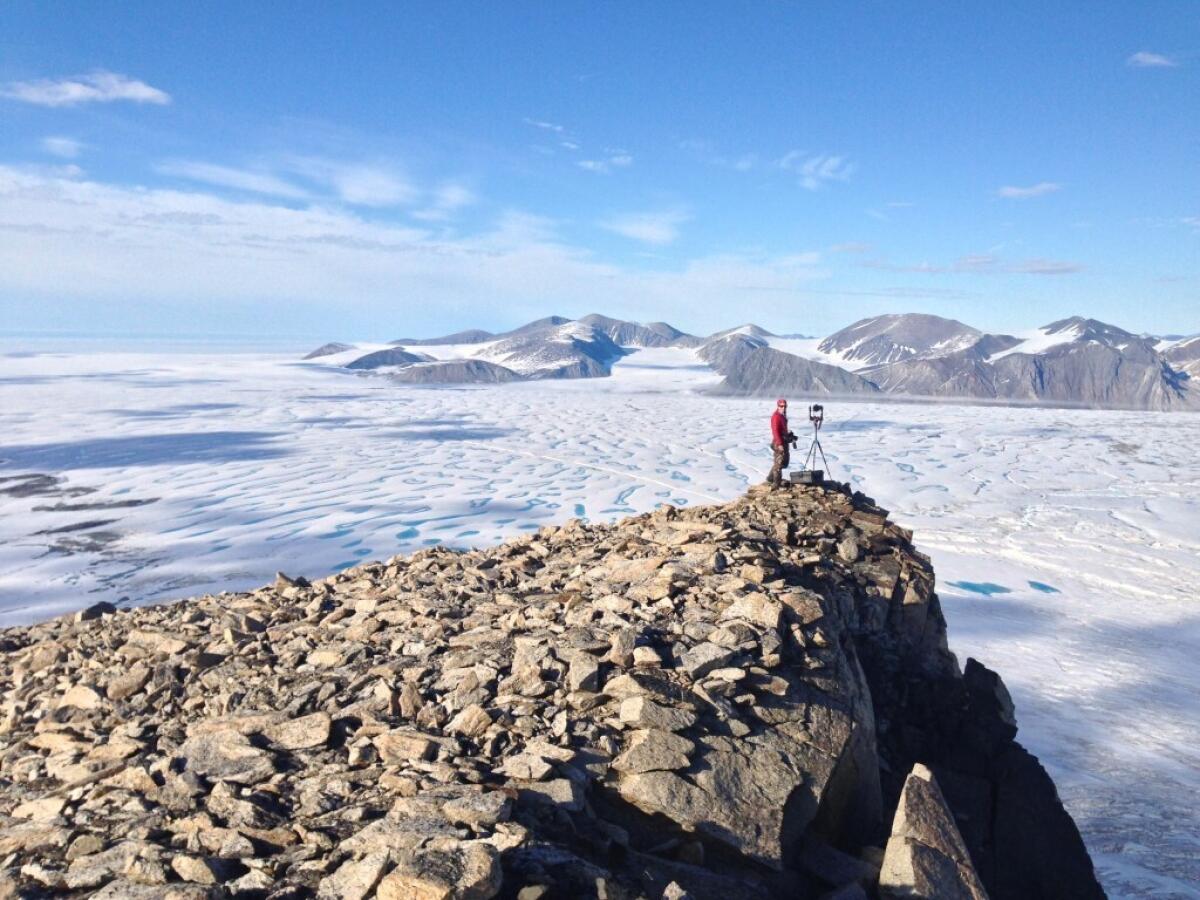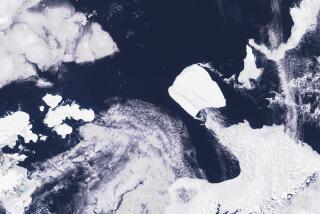Global warming collapses Canada’s last intact ice shelf

- Share via
Much of Canada’s remaining intact ice shelf has broken apart into hulking iceberg islands thanks to a hot summer and global warming, scientists said.
Canada’s 4,000-year-old Milne Ice Shelf on the northwestern edge of Ellesmere Island was the country’s last intact ice shelf, but at the end of July ice analyst Adrienne White, of the Canadian Ice Service, noticed that satellite photos showed about 43% of it had broken off. She said it happened around July 30 or 31.
Two giant icebergs formed, along with numerous smaller ones, and they have already started drifting away, White said. The biggest is nearly the size of Manhattan — 21 square miles and 7 miles long. They are 230 to 260 feet thick.
“This is a huge, huge block of ice,” White said. “If one of these is moving toward an oil rig, there’s nothing you can really do aside from move your oil rig.”
The undulating white ice shelf of ridges and troughs dotted with blue meltwater had been 72 square miles, larger than the District of Columbia — but it’s now is down to 41 square miles.
Temperatures from May to early August in the region have been 9 degrees warmer than the 1980 to 2010 average, University of Ottawa glaciology professor Luke Copland said. This is on top of an Arctic that already had been warming much faster than the rest of globe, with this region warming even faster.
The heating of the planet is pushing Earth’s polar bear population to its limit, and according to a new study they could have fewer than 100 years left before extinction.
“Without a doubt, it’s climate change,” Copland said, noting the ice shelf is melting from both hotter air above and warmer water below.
“The Milne was very special,” he added. “It’s an amazingly pretty location.”
Ice shelves are hundreds to thousands of years old, thicker than long-term sea ice, but not as big and old as glaciers, Copland said.
Canada used to have a large continuous ice shelf across the northern coast of Ellesmere Island in the Canadian territory of Nunavut, but it has been breaking apart over the last decades because of man-made global warming, according to White. By 2005 it was down to six remaining ice shelves, she said, but “the Milne was really the last complete ice shelf.”
“There aren’t very many ice shelves around the Arctic anymore,” Copland said. “It seems we’ve lost pretty much all of them from northern Greenland and the Russian Arctic. There may be a few in a few protected fjords.”
More to Read
Sign up for Essential California
The most important California stories and recommendations in your inbox every morning.
You may occasionally receive promotional content from the Los Angeles Times.













